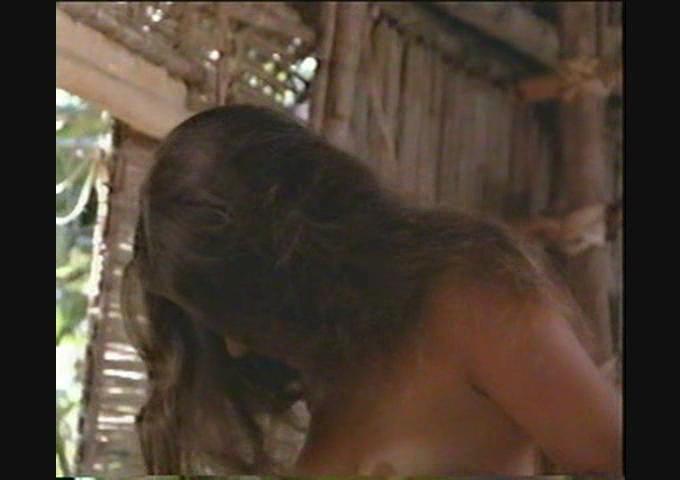


In 1988, her father had a relationship with an Argentine woman, and they had a son, Marco Jovovich. Milla's parents divorced soon after their arrival in Los Angeles. They subsequently emigrated to Sacramento, California, settling in Los Angeles seven months later. In 1980, when Jovovich was five years old, her family left the Soviet Union and emigrated to London. She spent most of her early childhood in Moscow, Russian SFSR, her mother's native city, and says she was born in Ukraine "pretty much by accident". Her paternal ancestors are from the Vasojevići clan in Montenegro, and also lived in Serbia. Her maternal ancestors were from the Russian city of Tula. Jovovich was born on December 17, 1975, in Kyiv, Ukrainian SSR, the daughter of Galina ( née Loginova), a Soviet Russian actress, and Bogdan Jovović, a Serbian doctor. Jovovich has her own production company, Creature Entertainment. In 2003, model Carmen Hawk and she created the clothing line Jovovich-Hawk, which ran until 2008. She continues to release demos for other songs on her official website and frequently contributes to film soundtracks. Jovovich released a debut album, The Divine Comedy, in 1994, and a follow-up, The People Tree Sessions, in 1998.
THE RETURN TO THE BLUE LAGOON NUDITY SERIES
Between 20, Jovovich portrayed Alice in the action horror film franchise Resident Evil, which became the highest-grossing film series to be based on video games. She starred as the heroine and martyr in Besson's The Messenger: The Story of Joan of Arc (1999). She and Besson married that year, but soon divorced. She was considered to have a breakthrough with her role in the 1997 French science-fiction action film The Fifth Element, written and directed by Luc Besson. Jovovich gained attention for her role in the 1991 romance film Return to the Blue Lagoon, as she was then only 15. In 1988, Jovovich made her screen debut in the television film The Night Train to Kathmandu and appeared in her first feature film, Two Moon Junction. Richard Avedon featured her in Revlon's "Most Unforgettable Women in the World" advertisements. In 1987, at the age of 12, she began modeling when Herb Ritts photographed her for the cover of the Italian magazine Lei. īorn in Kyiv, Ukrainian SSR, Soviet Union, Jovovich emigrated with her parents to London when she was five, and then to Sacramento, California they finally settled in Los Angeles seven months later. In 2004, Forbes determined that she was the highest-paid model in the world. Her starring roles in numerous science-fiction and action films led the music channel VH1 to deem her the "reigning queen of kick-butt" in 2006. In order to succeed in a prosecution, you had to convince a jury.Milica Bogdanovna Jovovich ( / ˈ j oʊ v ə v ɪ tʃ/ YOH-və-vitch born December 17, 1975), known professionally as Milla Jovovich, is an American actress, supermodel, and singer. No longer could a judge or magistrate impose his view of what was obscene.
THE RETURN TO THE BLUE LAGOON NUDITY TRIAL
This decision pretty much drove a coach-and-horses through the 1959 Act, and in the wake of the trial something had to be pretty strong indeed to be in danger of being judged 'obscene' by a jury, mere sex (between consenting adults), or nudity, would not do it.īy criminalising it, the 1959 Act had surrendered the decision to a jury. But in 1963 the Act's impact was largely destroyed by the Lady Chatterley trial at the Old Bailey, when Penguin Books were acquitted by the jury on a charge of having published the (fairly sexually explicit) novel, Lady Chatterley's Lover, publication of which had been banned in the UK since the 1920s. That meant it had to "tend to deprave and corrupt" the intended audience. Pornography was not even the issue: a publication now had to be 'obscene' in order to transgress the law. But that was wholly subjective, hence useless.Īfter the introduction of the Obscene Publications Act 1959, in the UK, nudity ceased to be pornography in law, if it ever had been ("It is evident that mere nudity in painting and sculpture is not obscenity": Buchanan's Journal of Man, published in January 1888). There was, in the 1950s, an unhelpful "I know it when I see it" attitude. UK newspapers used to publish topless photos of female models (" girls"), from about 1974 onwards, and it was generally regarded as merely "glamour" photography. This seems to have been agreed with the British Board of Film Censors, on the basis that a female body (unlike a male) is incapable of showing sexual arousal - at least on a cinema screen. This was a rule of thumb in 1970s British cinema, which normally didn't object to female nudity on screen, so long as there was no man present alongside her. If only one person is present in a scene (a photo, a film set, whatever) you ordinarily do not have pornography, as it generally requires the presence of two or more participants.


 0 kommentar(er)
0 kommentar(er)
